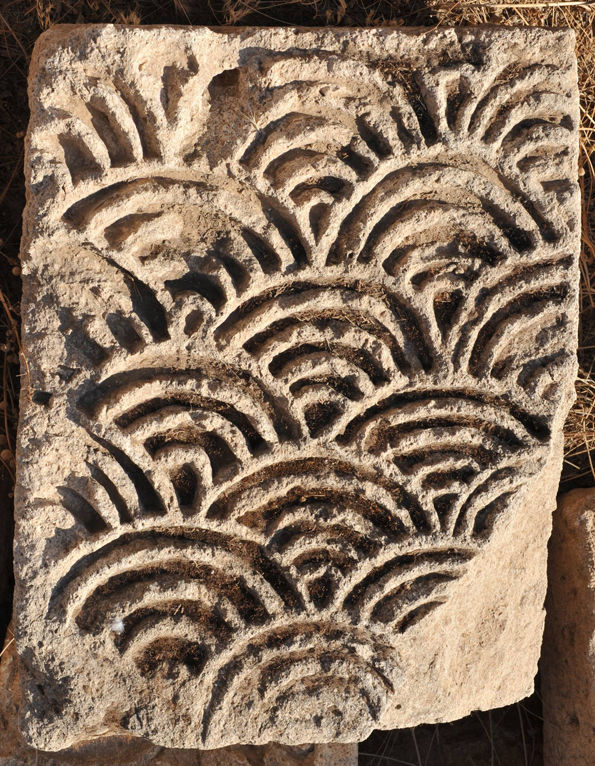Block Carved with a Fan Pattern, ca. 720–724. Limestone, carved. Department of Antiquities, Qasr al-Qastal Archaeological Site, Jordan
Most surveys of Islamic art proceed chronologically or geographically to synthesize several centuries of material covering a region stretching from Spain to Afghanistan. Oleg Grabar's book, The Formation of Islamic Art, instead focuses thematically on the earliest centuries of Islam. The resulting related essays seek to define the nature of "Islamic" art through themes such as architecture, ornament, luxury art, and attitudes towards images. Grabar is interested in whether "classical" visual traditions inherited from the Roman, Byzantine, and Sasanian worlds survived into the Umayyad period and beyond. However, he is ultimately concerned with the innovations of the first Muslim patrons and artists in creatively appropriating and recombining these styles, motifs, and forms.
Chapters devoted to religious and secular arts stand out in illuminating these points. (Grabar first points out that the distinction between "religious" and "secular" Islamic art is sometimes questioned, and provides an explanation of how he is using the terms.) In discussing religious art, Grabar explores developments in mosque architecture as unique responses to changing liturgical concerns. He shows how inherited artistic forms were recombined to serve to the new needs of the community, arguing that this reflects a self-conscious rejection of traditions associated with the older forms. In the chapter on secular art, he draws attention to the decoration of palaces and to lavish objects to show continuities and shifts in notions of "luxury" in the definition of new artistic idioms.
This influential book and the questions it raises continue to drive scholarship today, many years after it was first published. Was Islam responsible for the radical changes in artistic production that took place in these regions over the seventh through ninth centuries? What differentiates Islamic art from other late antique artistic traditions? And should we consider artistic developments in early Islamic period aberrations, or did they fundamentally shape artistic production in later periods as well? Such questions speak to larger art historical concerns about the relationship of changing artistic styles to broad cultural shifts.
About the Book
Oleg Grabar, The Formation of Islamic Art. New Haven: Yale University Press, 1987
